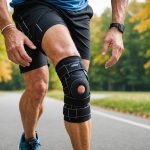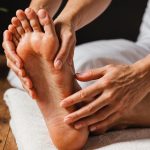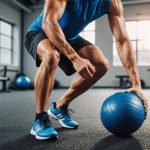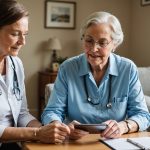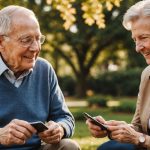Exploring Cutting-Edge Innovations in Remote Health Monitoring for Seniors
In the era of advancing technology and the growing need for efficient healthcare solutions, remote health monitoring has emerged as a revolutionary tool, particularly for seniors. This article delves into the latest innovations, benefits, and practical applications of remote health monitoring, highlighting how it is transforming elderly care and improving the quality of life for older adults.
The Need for Remote Health Monitoring in Elderly Care
As the global population ages, the demand for effective and efficient elderly care solutions has never been more pressing. Older adults often face a decline in mobility, cognitive function, and overall health, making them more vulnerable to accidents, medical emergencies, and chronic conditions. Traditional methods of monitoring residents in care homes rely heavily on in-person caregiving staff, which can be resource-intensive and prone to human error.
Also to see : Discover the Cutting-Edge Hearing Technologies Transforming Life for Seniors Aged 75 and Up
Remote health monitoring addresses these challenges by providing continuous, real-time oversight without the need for constant physical presence. This technology ensures that seniors receive timely and appropriate care, enhancing their safety, independence, and overall quality of life.
Advanced Technologies in Remote Health Monitoring
Remote health monitoring for seniors leverages a range of advanced technologies to provide comprehensive care.
This might interest you : Exploring the Benefits and Drawbacks of Knee Braces for Seniors Suffering from Osteoarthritis
Wearable Devices and Sensors
Wearable devices and sensors are integral to remote health monitoring. These devices can track vital signs such as blood pressure, heart rate, and blood glucose levels, providing healthcare providers with real-time data to manage chronic conditions effectively. For instance, diabetic patients can use RPM devices to track their blood glucose levels, enabling healthcare teams to provide immediate feedback and adjust treatment plans without the need for physical visits.
| Device | Function | Benefits |
|---|---|---|
| Blood Pressure Monitors | Track blood pressure | Better management of hypertension, reduced risk of stroke and heart attack |
| Glucose Monitors | Track blood glucose levels | Real-time feedback for diet and medication adjustments |
| Pulse Oximeters | Track oxygen levels | Early detection of respiratory issues |
| Thermometers | Track temperature | Monitoring for infections and other health issues |
Non-Contact Monitoring Systems
Non-contact monitoring systems, such as 4D imaging sensors, offer a significant advancement in remote health monitoring. These systems can track patients’ vital signs and movements without physical contact, detecting falls and other health issues seamlessly. Integrated with AI and machine learning, these technologies provide predictive analytics and early warning systems, enabling early intervention and potentially preventing hospital admissions.
AI and Machine Learning
Artificial intelligence (AI) and machine learning are transforming remote health monitoring by analyzing vast amounts of data to detect subtle changes in a patient’s health. For example, AI can identify trends in a patient’s heart rate or respiratory rate that suggest a deterioration in health, prompting early intervention. Platforms like Norbert Health use AI-aided technology to simplify workflows, scale high-quality care, and improve the way care is managed for seniors, including automated execution of tasks like vitals and mobility tests.
Key Features and Benefits of Remote Health Monitoring
Remote health monitoring offers several key features and benefits that make it an indispensable tool in elderly care.
Fall Detection and Emergency Response
One of the most critical features of remote health monitoring is fall detection. Falls are a leading cause of injury among older adults, and prompt detection is crucial for preventing further injury or complications. Remote monitoring systems can detect falls and send automatic alerts to caregivers or emergency services, ensuring timely response and care.
Health Monitoring and Management
Remote health monitoring systems can be integrated with wearable health devices to track vital signs in real-time. This constant monitoring helps in managing existing health conditions and identifying any sudden changes that may require immediate medical attention. For example, patients with chronic diseases like heart disease, COPD, or diabetes can benefit from continuous monitoring, allowing for better management and early detection of complications.
Independence and Quality of Life
Remote health monitoring supports elderly residents in maintaining a sense of independence while ensuring their safety. Residents can enjoy more autonomy within care facilities or at home, knowing that monitoring technology provides oversight. This enhances their quality of life, allowing them to live with dignity and freedom.
Peace of Mind for Caregivers and Families
For caregivers and families, remote health monitoring offers reassurance and peace of mind. Even from a distance, caregivers can monitor safety and respond to alerts, reducing stress and allowing for proactive care. This is particularly beneficial for families who cannot visit frequently, as they gain confidence that any issues will be quickly addressed.
Practical Applications and Examples
Remote health monitoring is being used in various practical ways to improve healthcare outcomes for seniors.
Hospital-at-Home Programs
Remote health monitoring supports hospital-at-home programs, allowing patients to receive hospital-level care in the comfort of their own homes. This reduces the need for hospital stays and improves patient outcomes. For instance, during the COVID-19 pandemic, RPM was used to monitor patients with mild to moderate symptoms at home, reducing hospital admissions and ensuring timely care.
Elderly Care Facilities
In elderly care facilities, remote monitoring systems utilize advanced technologies like CCTV cameras, sensors, and emergency alert systems to keep track of residents’ activities and health statuses. These systems allow staff to monitor multiple areas simultaneously, detect incidents like falls, and respond rapidly to emergencies.
Home Care
For seniors living at home, remote health monitoring devices such as wireless pagers and call buttons provide an effective way to seek help in emergency situations. These devices are easy to use and offer a range of features, including adjustable volume control, multiple alert tones, and a significant wireless range, ensuring comprehensive coverage for those at risk of falls or needing extra assistance.
Challenges and Future Directions
While remote health monitoring offers numerous benefits, there are challenges to its widespread adoption.
Data Security and Privacy
Data security and privacy are paramount concerns as sensitive health data is transmitted over digital platforms. Ensuring the accuracy and reliability of RPM devices is also crucial to avoid misdiagnoses and inappropriate treatments. Healthcare providers must implement robust security measures to protect patient data and maintain trust in these systems.
Integration and Accessibility
The integration of remote health monitoring into existing healthcare systems can be complex. Ensuring that these technologies are accessible and user-friendly for both patients and caregivers is essential. Training programs and support services can help in overcoming these challenges and maximizing the benefits of remote health monitoring.
Remote health monitoring is revolutionizing the way we care for seniors, offering a more proactive, efficient, and cost-effective healthcare ecosystem. With advancements in wearable technology, non-contact monitoring, and AI, these systems are enhancing patient-centered care, improving health outcomes, and reducing healthcare costs.
As Ashley Hettermann, Director of Product Management at Direct Supply Brands, notes, “The integration of RPM technology into these paradigms represents a transformative leap forward, offering significant benefits to patients, providers, and healthcare systems alike.”
For families and caregivers, remote health monitoring provides peace of mind, knowing that their loved ones are safe and receiving the care they need. As the technology continues to evolve, it is clear that remote health monitoring will play an increasingly vital role in ensuring the health, safety, and independence of seniors.
Practical Insights and Actionable Advice
- Invest in Wearable Devices: Consider using wearable devices that track vital signs to ensure continuous monitoring and early detection of health issues.
- Implement Non-Contact Monitoring: Use non-contact monitoring systems, especially in elderly care facilities, to detect falls and other health issues without the need for wearable devices.
- Leverage AI and Machine Learning: Utilize AI and machine learning to analyze data and provide predictive analytics, enabling early intervention and better health outcomes.
- Ensure Data Security: Implement robust security measures to protect patient data and maintain trust in remote health monitoring systems.
- Provide Training and Support: Offer training programs and support services to help patients and caregivers use remote health monitoring technologies effectively.
By embracing these innovations and addressing the challenges associated with them, we can create a more holistic and patient-centered approach to healthcare, enhancing the quality of life for seniors and setting the foundation for a future of quality care.




